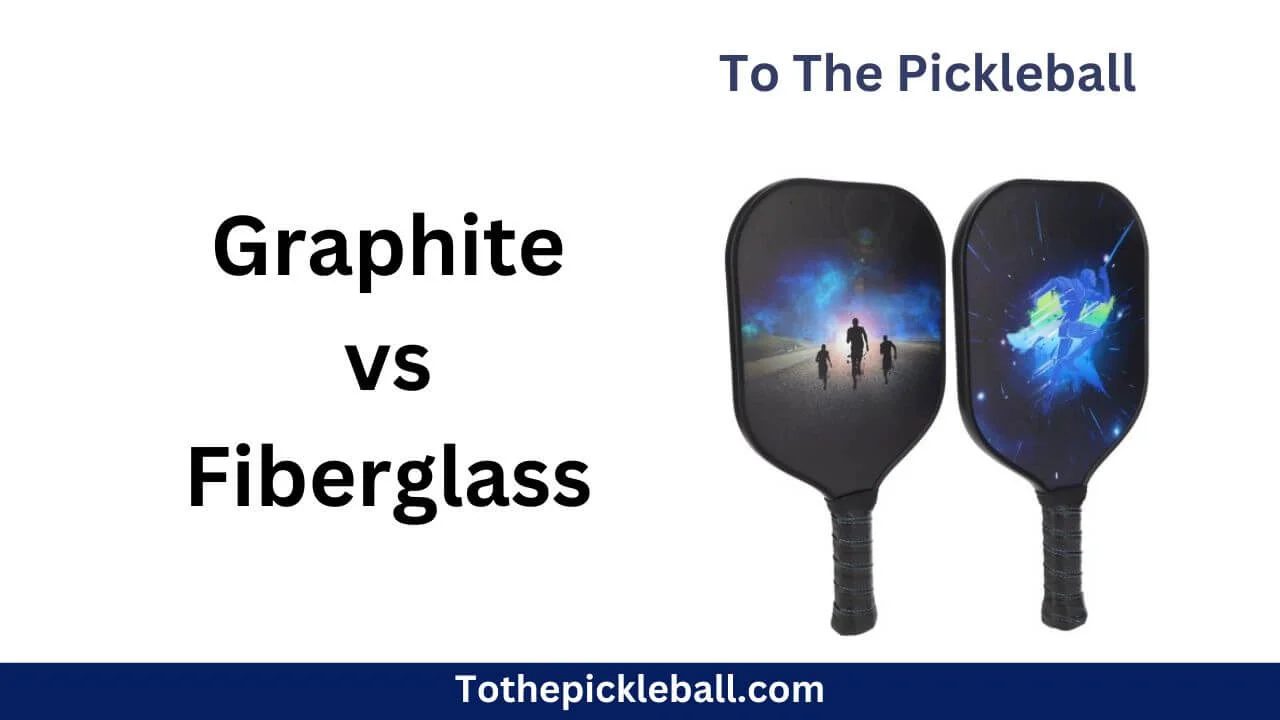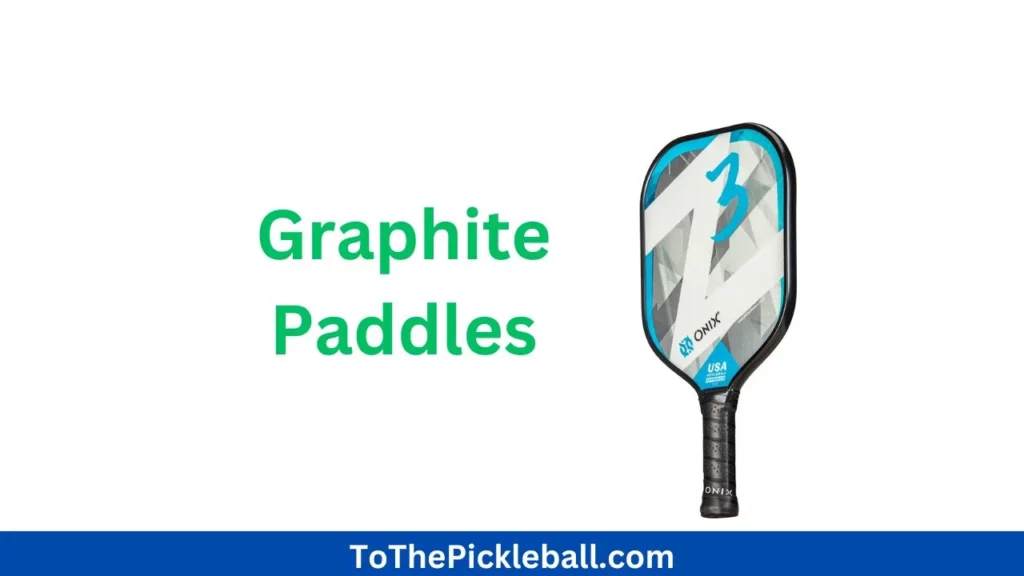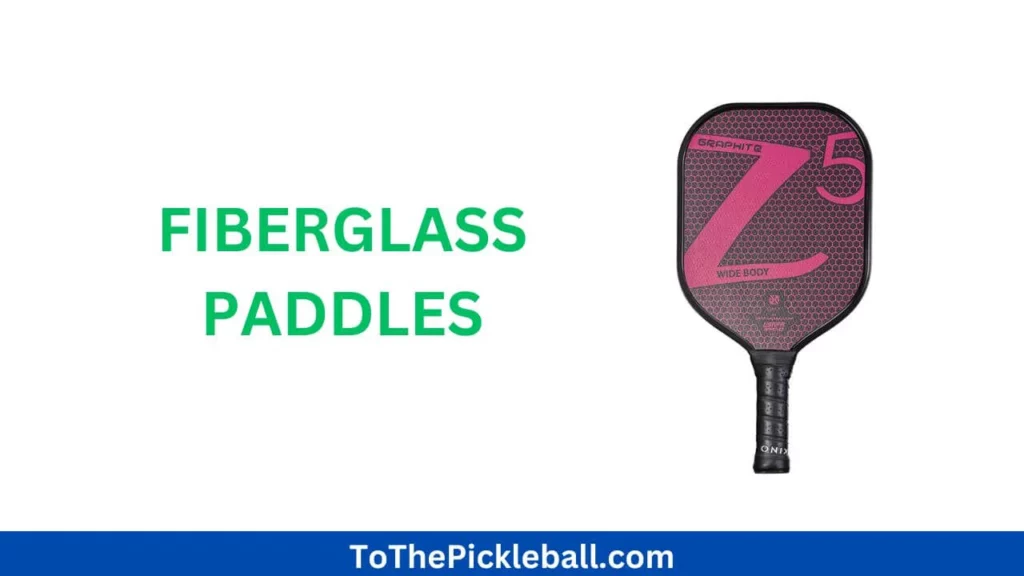

Introduction
Pickleball is a fun and exciting sport that has gained popularity in recent years. It requires a paddle to hit the ball over the net, which is where the choice of paddle comes into play. Two of the most popular materials for pickleball paddles are graphite and fiberglass. In this article, we will compare graphite and fiberglass pickleball paddles and help you decide which one is better for you.
Graphite vs. Fiberglass Pickleball Paddles: Choosing the Best Option
Graphite and fiberglass are two popular materials used in the construction of pickleball paddles. Both have their advantages and disadvantages, and it’s important to know the difference between the two before making a purchase.
Graphite Paddles:

Graphite paddles are known for their stiffness, lightweight, and durability. They are ideal for players who like to hit hard and fast shots. Graphite paddles have a smaller sweet spot than fiberglass paddles, which means they require more precision to hit the ball correctly.
FIBERGLASS PADDLES:


Fiberglass paddles are more forgiving than graphite paddles, making them ideal for players who prefer a softer touch. They have a larger sweet spot, which means that players can hit the ball with more power without worrying about precision. However, fiberglass paddles are not as durable as graphite paddles and may need to be replaced more frequently.
Difference Between Graphite and Fiberglass Pickleball Paddles
| Graphite Paddles | Fiberglass Paddles |
|---|---|
| Made of carbon fiber material | Made of reinforced plastic material |
| Strong and lightweight | More flexible and forgiving |
| Stiffer and provide more control | Softer and more forgiving |
| Preferred by players who prioritize precision and power | Ideal for players who are still developing their skills or looking for greater consistency in their shots |
| Suitable for players with advanced skills | Suitable for players of all skill levels |
| May have higher cost | May have lower cost compared to graphite paddles |
The decision to choose between graphite and fiberglass paddles ultimately depends on a player’s individual preferences and needs. It is important to try both types and decide which one suits the player’s playing style and skill level the most.
Manufacturing of Fiberglass vs Graphite Pickleball Paddles:
Graphite and fiberglass paddles are manufactured differently. Graphite paddles are made by layering sheets of carbon fiber material and epoxy resin. The layers are then compressed and heated to form a solid structure. Fiberglass paddles are made by layering sheets of fiberglass cloth and resin. The layers are then pressed and cured to form a solid structure.
A Pickleball Paddle Buyer’s Guide: How to Pick the Right Paddle for You
Choosing the right pickleball paddle is important to ensure that you enjoy the game and improve your skills. Here are some factors to consider when picking a pickleball paddle:
| Weight | The weight of a pickleball paddle can range from as light as 6 ounces to as heavy as 14 ounces. A paddle’s weight can affect the power and control of your shots, as well as how quickly you can maneuver the paddle. A heavier paddle can provide more power but may be more tiring to use for extended periods, while a lighter paddle may be easier to maneuver but may not provide as much power. |
| Grip size | The grip size of a pickleball paddle is the circumference of the handle. The right grip size for you should feel comfortable in your hand and allow you to maintain a relaxed grip throughout the game. A grip that is too small can cause your hand to cramp, while a grip that is too large can make it difficult to control the paddle. |
| Shape | The shape of a pickleball paddle can vary from a traditional oval shape to a more modern teardrop or rectangular shape. The shape can affect the balance of the paddle and the sweet spot, or the area of the paddle that provides the most power and control. |
| Material | The material of a pickleball paddle can affect its durability, stiffness, and weight. Graphite and fiberglass are two common materials used to make pickleball paddles, with graphite being stiffer and more durable, and fiberglass being softer and more forgiving. |
| Core | The core of a pickleball paddle is the inner layer that provides the paddle’s structure and determines its stiffness. The core can be made of different materials, such as polypropylene, aluminum, or polymer, and can affect the power and control of your shots. A thicker core can provide more power, while a thinner core can provide more control. |
Alert:
When choosing a pickleball paddle, make sure to pay attention to the weight, grip size, shape, material, and core. These factors can greatly affect your performance on the court. Additionally, be aware of the rules and regulations regarding paddle specifications, such as size and weight limits, to avoid disqualification during tournaments. Finally, always inspect your paddle before playing to ensure that it is in good condition and does not have any cracks or other damage that could affect your play or safety.
Other Material Used To Make Paddles:
Besides graphite and fiberglass, other materials used to make pickleball paddles include wood, aluminum, and polymer. Each material has its own advantages and disadvantages, and it’s important to choose a material that fits your playing style.Let’s take a look at some of them and their properties.
| Wood | Wood was the original material used to make pickleball paddles and is still used today. Wood paddles are heavier and provide less power than modern materials, but they have a softer feel and can be a good choice for players who prefer a more traditional paddle. |
| Composite | Composite paddles are made from a combination of materials, such as fiberglass, carbon fiber, and polymer. They can be lighter and more durable than wood paddles and provide more power and control. However, they can be more expensive than other materials. |
| Aluminum | Aluminum paddles are lightweight and durable, making them a good choice for players who want a paddle that can withstand frequent use. They can be stiff, which can provide more power but less control. |
| Polymer | Polymer paddles are made from a type of plastic and are lightweight and durable. They can be a good choice for beginners or players who want a paddle that is easy to maneuver. However, they may provide less power and control than other materials. |
| Carbon Fiber | Carbon fiber paddles are lightweight and stiff, providing more power and control than other materials. They can be more expensive than other materials, but they are also more durable. |
When choosing a pickleball paddle, it’s important to consider the material, weight, grip size, shape, and core. Each of these factors can affect the power, control, and feel of your shots. It’s also important to consider your playing style and preferences when choosing a paddle. A good pickleball paddle can help you improve your game and enjoy the sport even more.
Pickleball Paddle Core Materials and Why They’re Important:
The core of a pickleball paddle affects the paddle’s performance and feel. The core can be made from different materials, including polymer, aluminum, and nomex. The type of core you choose will depend on your playing style and preferences.
How Does the Core and Its Thickness Impact Which Paddle I Choose?
The thickness of the core affects the paddle’s weight and stiffness. Thicker cores provide more power but less control, while thinner cores provide more control but less power. The type of core and thickness you choose will depend on your playing style and preferences.
Summary
Choosing the right pickleball paddle is essential to improving your skills and enjoying the game. Whether you choose a graphite or fiberglass paddle, consider factors such as weight, grip size, shape, material, and core when making your purchase.






